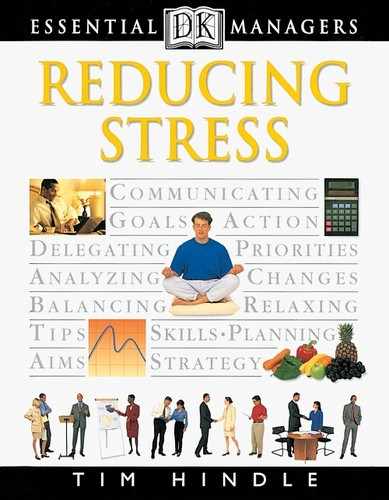Analyzing Personality
The effects of stress are closely linked to individual personality. The same level of stress affects different people in different ways, and each person has different ways of coping. Recognizing these personality types means that more focused help can be given.
Understanding types
Research in the 1960s into the effects of stress on the heart found that some patients with similarities in personality were more prone to heart disease. These people were described as Type A, while those less at risk were classed as Type B. The former are competitive and hard-driving, so are likely to seek out positions of responsibility. Whether their health is at risk because they are in high-stress jobs, or whether high-risk jobs encourage Type-A behaviour is unclear, but these people may need more support.
Identifying personality types a and b
Listed here are some of the classic traits and behaviour patterns associated with personality Types A and B. It is rare to find someone who is a perfect Type A or B – many people exhibit characteristics of both – but those with mostly Type-A traits often cope badly under pressure. If you detect Type-A tendencies in colleagues, they may be at risk from stress and should consider strategies to deal with this.
Type-A personalities may show the following tendencies: competitiveness; hastiness; aggressiveness; impatience; assertiveness; perfectionism; restlessness; punctuality; seeking attention.
Type-B personalities may show the following tendencies: non-competitiveness; placidity; patience; being laid-back; being relaxed; contentment; enjoying routine; tardiness; being happy to work unnoticed.
Recognizing strategies
Strategies for coping with stress can be divided into two main categories: adaptive and maladaptive. If colleagues exhibit adaptive behaviour, they are probably dealing positively with a problem, talking about it, and actively seeking help. If they are behaving maladaptively, they may be causing themselves greater stress by ignoring their problem and trying to carry on as normal. This type of behaviour, known as being “in denial”, is often associated with competitive, Type-A personalities.
Assessing behaviour
Adaptive and maladaptive behaviours are two ways of dealing with stress. The former tends to lead to problems being resolved, while the latter can increase problems.

Adaptive Behaviour
Seeking support from superiors
Prioritizing workload
Recognizing limitations
Talking to friends and close colleagues
Maladaptive Behaviour
Denying that problems exist
Taking on more than can be handled
Working long and irregular hours
Avoiding discussing problems
Noticing changes
When colleagues are adversely affected by stress, their behaviour may change dramatically, and negative characteristics may be intensified. For example, a person who normally tends to be impatient – and may be known for “not suffering fools gladly” – may find that this degenerates to a point where they cannot control their temper, leading to explosive and destructive temper tantrums. Watch for such warning signals in your colleagues.
TIP
Suggest that your colleagues try to view problems as opportunities.
TIP
Respect other opinions – do not feel you always have to be right.
TIP
Identify and enlist the help of stress-free, supportive members of staff.
TIP
Advise colleagues to concentrate on one task at a time.
